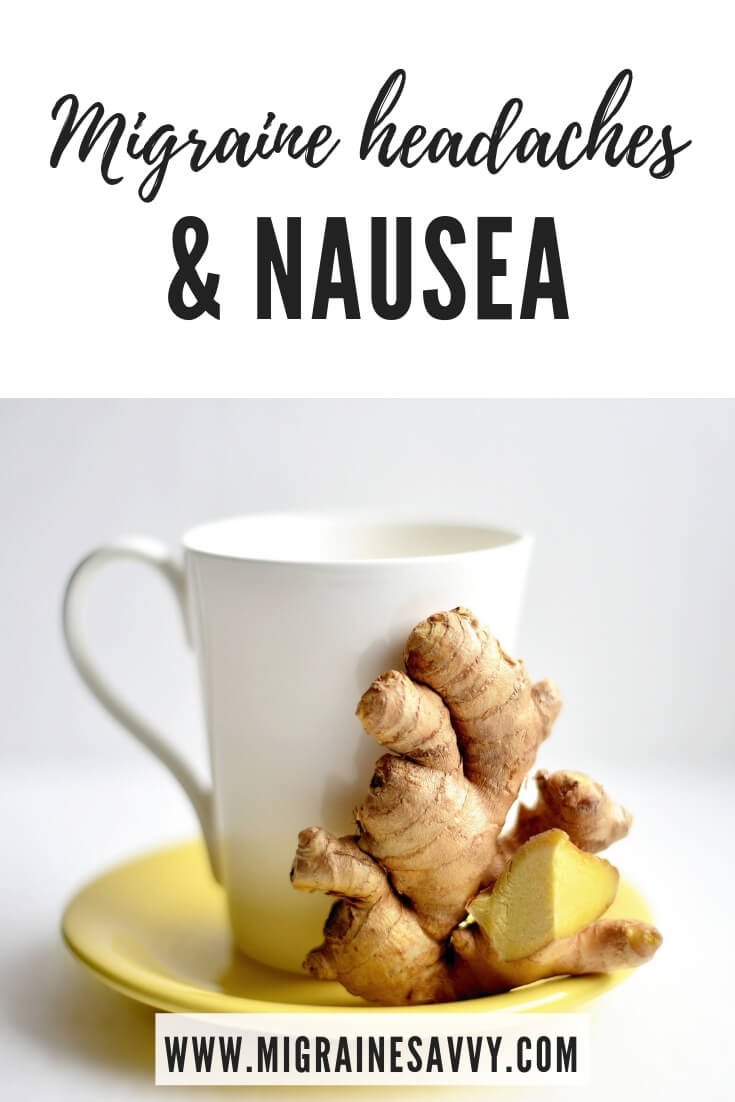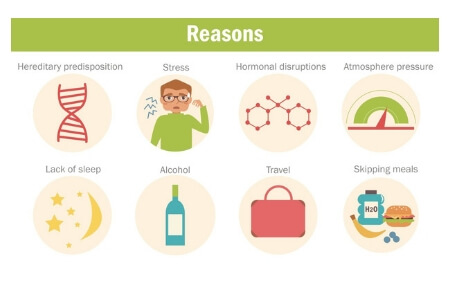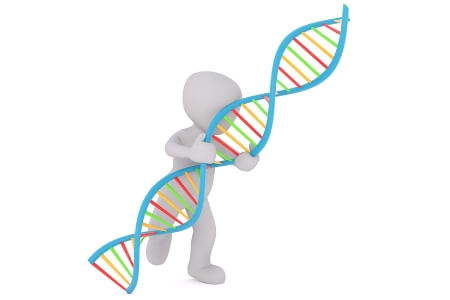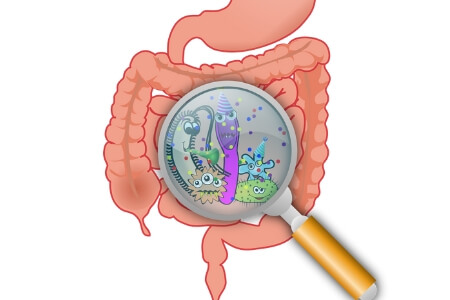Magnesium Deficient = More Migraine Attacks
Science confirms this hidden trigger.
Get all 7 forms your body actually absorbs in one bottle.
🎁Save 10% with my code!
Magnesium Deficient = More Migraine Attacks
Science confirms this hidden trigger. Get all 7 forms your body actually absorbs in one bottle +
🎁Save 10% with my code!
Causes of Headaches and Nausea: Why You Get Nauseous with A Migraine
Why do you get nauseous with a migraine? One of the causes of headaches and nausea is thought to be a combination of the nervous system and your stomach. When your body senses an attack is on its way, it slows your digestion. This is called delayed stomach emptying (or Gastric stasis) and it's the most likely cause of nausea and vomiting during an attack.
Digestive issues before a migraine, especially nausea and vomiting, are extremely common. Studies indicate that between 60 - 95% of people with migraine experience nausea, and about 50 - 60% experience vomiting. [2]
Let's have a look at how it's all connected.

The Causes of Headaches and Nausea... What Happens?
Doctors are still not certain about the exact cause of migraine headaches. They know it begins in the brain and that the central nervous system plays a critical role in the initiation and progression of the whole migraine episode. [2]
They know there are chemical messengers and chemical reactions involved. And they know the vascular system is also involved.
I've written about the causes of headaches here - How to Pin Down What Causes Migraine.
So let's discuss the nausea part of migraine attacks. Nausea can occur in any or all 4 phases of a migraine attack.
There's actually another form of migraine called cyclical vomiting syndrome, and children diagnosed with Abdominal Migraine can experience stomach pain and nausea with an attack. [2]
Subtle shifts occur in your stomach before a migraine attack occurs and even before you notice them.
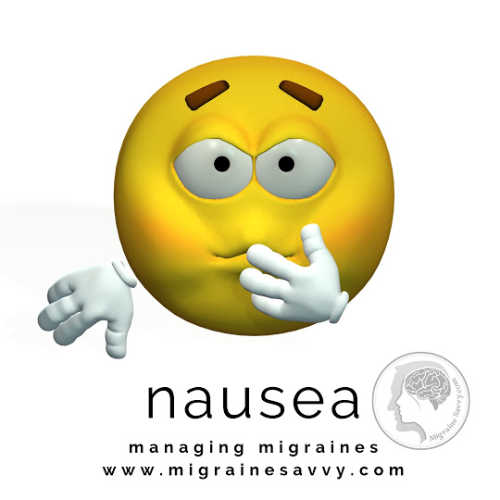 Causes of headaches and nausea... gastric stasis @migrainesavvy
Causes of headaches and nausea... gastric stasis @migrainesavvyHere is the best description of why we get nauseous around a migraine attack. It's from the book called The Migraine Solution written by Dr. Paul Rizzoli, et al.:
"During a migraine headache, arteries in the head dilate.
The widening arteries stimulate nerve fibers that encircle the arteries, causing them to send impulses to the brain.
There, these nerve impulses are interpreted as pain." [1]
They also activate the autonomic nervous system (ANS), which originates in the spinal cord and extends to organs throughout the body, including the stomach and intestines. The ANS controls the body’s 'fight or flight' response, mobilizing the body for action by speeding up the heart rate, raising blood pressure, and slowing digestion.
To slow digestion, the ANS closes the pyloric sphincter (the ring of the smooth muscle that separates the stomach from the upper part of the intestines). As a result, the stomach dilates, and any leftover food stays in the stomach, which can cause the nausea and vomiting that often accompany migraine headaches. (There’s also evidence that activation of vomiting centers of the brain occurs as well).
This phenomenon also explains why migraine medications taken by mouth aren’t effective for everyone – they aren’t always well absorbed into the bloodstream. [1]
For more information please read my article on digestion problems. I've been taking stomach enzymes to help with this between migraines for a few years now.
If you decide to take stomach enzymes and supplements to aid in digestion please:
"Look for products labelled USP Verified to ensure that what you’re buying has been tested by the U.S. Pharmacopeia for purity and potency." [1]
Here are the supplements I recommend to help reduce the causes of headaches and nausea - Migraine Supplements: How To Know What Works.
The Problems With Nausea
The problem here might be obvious. What happens when you can't keep the medication down?
DO NOT... and I mean never, take additional medication if you vomit it up.
So, you need to ask your doctor, or pharmacist for another delivery method. Triptans come in nasal spray and injectable forms, peppermint flavored dissoluble wafers.
Another problem is waiting to take your abortive for fear of vomiting it up. You must act fast, if you wait you have reduced your change to abort the attack. By waiting you could even create a cyclical vomiting situation.
Learn to abort your attack faster and the nausea symptom should also subside. If it doesn't here are some other delivery options on triptan medications (at time of writing):
Zembrace SymTouch – a dose of sumatriptan delivered via subcutaneous injection.
Zomig Nasal Spray – a liquid spray of zolmitriptan inserted in one nostril.
Onzetra Xsail – a powder form of sumatriptan delivered via a spray in one nostril. [2]
Here Are The 5 Ways To Calm Your Tummy
Some people are not bothered by vomiting... I, on the other hand, will do pretty much anything NOT to vomit.
One of the best things I have found to help are anti-nausea wrist bands.
I have supplied a link here, but I think you can get them at most pharmacies now for under $10. Check the travel section. Just follow the instructions so you get the meridian point pressure right on your wrist. I often just move them a little to stimulate the point until my stomach calms down. Plus, it's safe to leave them on for hours if you fall asleep.
Ginger - aids digestion. Can be sliced or freshly grated and brewed as tea, taken as supplements, eaten in candied form. You can even try ingesting ginger essential oils to help stop or reduce the full impact of the attack.
Ginger tea works best if you can catch it all early enough. If you are too close to vomiting, then it may be of no use.
Peppermint - smelling peppermint essential oil might help you. As does ingesting peppermint, if you can keep it down. You can also take the oil in pill form - peppermint oil softgels.
Acupuncture or acupressure - both have proven results for nausea reduction. Here's my DIY pressure point routine you can use right now - Pressure Point Routine For Migraines.
Anti-Nausea medication - "particularly anti-emetics and anti-nausea medications, can provide much needed relief. Metocloperimide, ondansetron, promethazine and domperidone are some of the medications prescribed for nausea relief." [2]
My #1 Choice in Magnesium Supplementation
One Good Way To Help Heal Your Stomach
Now you understand how your stomach is affected directly by your migraines and by the medications you take.
Our migraines are also affected by the foods we eat, and even by our emotions.
Another thing you could try is L-Glutamine Powder to help heal your stomach lining. Please click on the link for more details.
It is an amino acid and I consider it essential to helping my body cope with all that I demand of it! It comes with a measuring scoop and I just take one scoop in the morning on an empty stomach in a small glass of water. One pot of powder lasts about three months. You can take it for a short time to see if it helps.
I hope this all helps reduce the causes of headaches and nausea for you.
Stay strong,
Holly
WANT MORE TIPS? Subscribe to my newsletter and follow along on Facebook and Pinterest for all of the latest updates.
MIGRAINE CAUSES Related Articles
How to be more MIGRAINE SAVVY right now...
References for Causes of Headaches and Nausea:
1. Rizzoli, P MD, Loder E., MD and Neporent L. (2011) The Migraine Solution. St. Martins Press: NY.
2. Glaser, A. (2018) Why Migraine Makes You Sick: How to Overcome Nausea and Vomiting. Available [online] at: https://migraineagain.com/migraine-nausea-vomiting/ Accessed Mar. 2019
Causes of Headaches and Nausea updated Nov. 6, 2020
